Counter Uncrewed Aerial Systems Sandbox 2025 (Urban)

How might we detect Micro and Mini Uncrewed Aerial Systems (UAS) in an urban environment that can be integrated into the broader military command and control systems?
The innovators for the 2025 CUAS Sandbox (Urban) have been selected. Please refer to the Innovators, experts, & end-users tab below for details.
What IDEaS provides
- Up to five days provided to each company selected to attend, and space for 16 companies concurrently.
- Four types of test locations: Ground level, Mid-level balcony on a high-rise building, High-level balcony on a high-rise building, and Rooftop.
- A red team of assorted drone targets flying around each test location.
- On-site one-on-one continual interaction with Canadian Armed Forces (CAF) and Royal Canadian Mounted Police (RCMP) end-users, United States (US) Government - Irregular Warfare Technical Support Directorate (IWTSD), and science experts.
- Iterative testing and demonstration to improve your technology.
- Feedback from CAF / RCMP to customize and adjust your test plan on the fly.
- Up to $20,000 in funding per company.
- $1.75 million in monetary prizes for promising technologies.
What innovators bring
- Advanced prototypes capable of detecting our Micro and Mini UAS.
- Your “A” game to detect our Red Team drones.
Innovators, experts, & end-users
The following innovators have been selected to demonstrate their solutions at the 2025 CUAS Sandbox (Urban).
| Participating innovators | Country | Solution name | Solution description | |
|---|---|---|---|---|
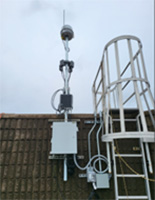
AirSight’s AirGuard |
AirSight | Canada | AirGuard | Integrates data from various sensors, processes it, and powers features that allow you to detect, track and respond to drone threats. |

Agile Electromagnetics’ Cognitive Electronic Warfare System (C2EWS) |
Agile Electromagnetics | Canada | CUAS Cognitive Electronic Warfare System (C2EWS) | Cognitive Electronic Warfare (EW) system, optimized for the C-UAS mission. Can autonomously detect, classify, track, and defeat swarms composed of dozens of drones. |
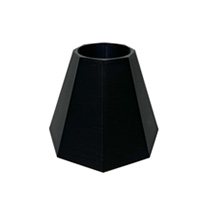
Angels in the Shell’s ARGUS |
Angels in the Shell Inc. | Canada | ARGUS | A lightweight, distributed drone detection system built for urban environments. Rapidly identifies and tracks threats in real time without relying on traditional radar or radio frequency (RF) methods. |

AllSeeing’s SHARK |
AllSeeing | Canada | SHARK (Sonic Hypersensitive Acoustic Ranging Kit) | An AI-powered "acoustic zoom lens", locating, classifying, and tracking drones using only their acoustic signatures, before they are visible in the optics or radio spectrum. |

Altivion Technologies Inc.’s SilentRaven |
Altivion Technologies Inc. | Canada | SilentRaven | A handheld passive RF detector that continuously scans for communication signals between drones and their operators. Rapidly deployable in dense urban environments. |
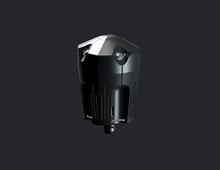
Chaac’s SkyMesh |
Chaac | Canada | SkyMesh | UItra-low-cost, passive, and distributed UAV detection system. Uses a network of off-the-shelf sensors and open-source AI models to collaboratively geolocate UAVs and interface with C2 systems. |

DARIT Technologies’ Rempart |
DARIT Technologies | Canada | Rempart, CUAS Intrusion Detection System | A dynamic mesh of multimodal layered detection stations using a state-of-the-art sensor suite for complete coverage, deep data fusion techniques, and proprietary AI models. |

Key Options’ SkyControl |
KeyOptions | Australia | SkyControl | An advanced, integrated technology solution built around Al-powered counter-drone systems incorporating RF, optics and radar detection and tracking, with kinetic and non-kinetic disruption options. |

LiveLink Aerospace Ltd.’s Airspace Intelligence System (AIS). |
LiveLink Aerospace Ltd. | Canada / United Kingdom | Airspace Intelligence System (AIS) | Employs an advanced defence matrix, seamlessly integrating passive RF detection and AI-driven electro-optics, to autonomously detect, identify, and track. |
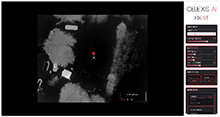
OBJEXIS’ FIXAIT |
OBJEXIS | Canada | FIXAIT | A next-generation, AI-powered visual detection and classification engine that transforms any video stream into a real-time C-UAS detection platform. |
Not available |
Prandtl Dynamics Inc. | Canada | Oscura (Acoustic Multi Band Detect and Interrogation) | Combines advanced acoustic sensing with interrogation methodologies to detect, confirm, and locate powered drones in urban environments. |

Northern Signal Ops’ logo. |
North American Signal Ops | Canada | LIGHTSCAT | A modular, AI-powered detection system designed to passively identify, classify, and track uncrewed aerial threats using RF/EMF signal analysis, high speed image capture and multi-sensor fusion. |

Rival Lab Inc.’s AeroWakes. |
Rival Lab Inc. | Canada | AeroWakes | Leveraging event-based imaging, the system detects UAS and their wakes using efficient data stream handling and machine learning to track, classify, and identify airborne targets in real time. |
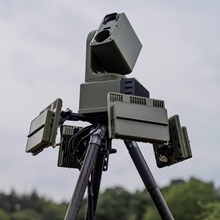
Roke Manor Research’s CORTEXA GUARDIAN |
Roke Manor Research | United Kingdom | CORTEXA GUARDIAN | A modular, deployable C-UAS system combining RADAR and PTZ sensor inputs, to provide a high-resolution, fully autonomous system that can simultaneously detect, identify and track UAS targets. |

Sentradel’s Autonomous Kinetic CUAS Turret |
Sendradel | Canada | Hover Autonomous Kinetic CUAS Turret | An autonomous counter-drone system designed to detect, track, and neutralize high-speed threats like FPV drones. Integrates a 360° camera, acoustic sensors, and AI-powered target recognition with a kinetic turret. |

Tiami Networks’ PolyEdge Mutifunction Sensor. |
Tiami Networks | Canada / United States | PolyEdge Mutifunction Sensor | Enables non-intrusive surveillance that respects privacy concerns. Uses existing electromagnetic energy from cellular transmitters and evaluates their echoes for detection when reflected by vehicles or people. |
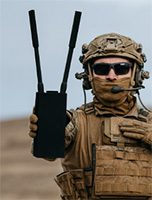
Tungsten Collaborative’s Screech Owl |
Tungsten Collaborative | Canada | Screech Owl | A rugged, low SWaP-C drone detection system optimized for rapid deployment and high mobility, with seamless C2 integration for mission-ready awareness. |
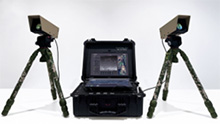
Visionary Machines’ Pandion Sentinel system |
Visionary Machines | Canada / Australia | Pandion Sentinel system | Provides real-time, passive 3D spatial awareness for continuous drone activity monitoring: detection, tracking, identification and precision targeting. |

Xubin Aerospace Inc.’s Eagle Vision. |
Xubin Aerospace Inc. | Canada | Eagle Vision | A counter-UAS solution employing a unique aerodynamic signature detection method to identify micro and mini drones. Allows detection without relying on RF signals. |

Zighra Inc.’s HiddenSpectrum. |
Zighra Inc. | Canada | HiddenSpectrum | AI-powered, passive RF threat detection platform for CUAS operations using real-time behavioural intent analysis. It detects, analyzes, and locates drone threats. |
DND/CAF/RCMP subject-matter experts and end-users |
|---|
Joint Counter-Uncrewed Aircraft Systems Office, Chief of Combat Systems Integration |
Canadian Joint Operations Command |
Canadian Army |
Royal Canadian Navy |
Royal Canadian Air Force |
Canadian Special Operations Forces Command |
Defence Research and Development Canada |
Royal Canadian Mounted Police |
US Department of Defense Irregular Warfare Technical Support Directorate |
The challenge
Operating in the urban environment has always been part of the broader CUAS challenge but simulating it on a military test range is not practical. Buildings and electromagnetic noise are very different from the open military test range used in our other CUAS Sandboxes.
The 2025 CUAS Sandbox (Urban) addresses this by using a major urban city environment as the test location. To ensure safety and prevent potential damage to city infrastructure, demonstrations will be limited to 'detect-only,' with no defeat mechanisms permitted during testing. Technologies capable of defeating drones can apply, but their defeat mechanisms will not be tested. Only detection capabilities will be evaluated, selected to attend, and demonstrated at the Sandbox.
Background and context
The UAS landscape is rapidly evolving. The rapid increase of availability, affordability, complexity, and capabilities of UAS systems is posing increasing threats to the Department of National Defence (DND)/CAF and our defence and security partners. Potential adversaries are also adapting UAS designs to evade current CUAS capabilities, by reducing the UAS visibility, minimizing radio-frequency emissions, increasing autonomy, operating at higher velocities, etc., thus rendering the current CUAS approaches obsolete. Proposed solutions to this challenge should consider not only what is available and a threat today, but also emerging UAS and CUAS capabilities and how they might be detected, and/or exploited tomorrow.
CUAS was identified as one of the priorities in Canada’s 2017 defence policy Strong, Secure, Engaged (SSE) which stated: “As the development of remotely piloted systems increases… Canada will require the appropriate capabilities to identify and defend against these burgeoning threats” (page 73).
Due to the importance of this challenge, the CAF is in the process of establishing a strategic level Joint CUAS Office (JCO) for coordinating with the Canadian Army (CA), Royal Canadian Navy (RCN), Royal Canadian Air Force (RCAF), Canadian Special Operations Forces Command (CANSOFCOM), and our allies and partners. The information presented in this IDEaS CUAS challenge represents a blending of characteristics of interest to one or more of the services, as well as the RCMP.
The RCMP has an enduring responsibility for protecting Canadians from threats in a domestic environment, including security at major events such as the G7, Olympics, and VIP protection, including CUAS. The RCMP also works with their international security partners (such as the research and development network with New Zealand, Australia, United Kingdom, and United States), which includes assorted technology test and demonstration events.
CUAS 2025 (Urban) is a critical milestone in the 5RD (Research and Development) CUAS network research and development activities where Canada (RCMP) is responsible to hold an urban CUAS testing event in 2025. This organization is the Public Safety version of 5Eyes. The RCMP requested assistance from DRDC CSS CUAS Portfolio Manager who subsequently engaged IDEaS, based on IDEaS Sandbox expertise and available contracting mechanism.
The following CAF projects have a direct interest in CUAS systems and the results of this challenge:
- Canadian Forces Land Electronic Warfare Modernization (CFLEWM). CFLEWM is upgrading the Army’s Mobile Electronic Warfare Teams in Light and Armoured platforms. While dedicated CUAS capabilities are out of scope for CFLEWM, a beneficial outcome would be to understand how multi-role EW Sense and Attack capabilities can contribute to the CUAS fight, and how dedicated CUAS sensors could be integrated into the EW sensor network.
- Land Intelligence, Surveillance and Reconnaissance Modernization (Land ISR Mod). Land ISR Mod is investigating capabilities that can provide sensor systems for the purposes of targeting. This project is mandated under SSE: Canada’s Defence Policy – Initiative #42 and is funded. This project is in Options Analysis transitioning to Definition.
- Counter Uncrewed Aerial Systems (CUAS). A specific CUAS initiative is investigating CUAS systems capable of defending critical infrastructure, vehicles, and personnel from micro and mini UAS. This project is not funded at this time, and consequently an intended date for any future procurement cannot yet be stated.
UAS sizes to be considered for the challenge
Micro and Mini UAS. For the purposes of this challenge, the following definitions are used:
- Micro UAS with typical characteristics of:
- <2kg.
- up to 200 ft Above Ground Level (AGL).
- normal mission radius of 5km Line of Sight (LOS).
- operating at high speeds up to 200 kph.
- Mini UAS with typical characteristics of:
- 2-15kg.
- up to 3000 ft AGL.
- normal mission radius of 25km LOS.
- operating at high speeds up to 200 kph.
CUAS methodologies
The general methodologies for achieving CUAS effects can be characterized as:
- Active detection, in which the CUAS system is transmitting a signal in order to detect the UAS (such as radar), which has the disadvantage of potentially revealing the location of the transmitter, depending on the technology used.
- Passive detection, which conceals our own position and relies on detecting the UAS from effects it generates (such as visual detection, electronic signatures, audible noise, etc.).
CUAS challenge essential outcomes
Aside from addressing the challenge in an overall sense, there are no specific detailed essential challenge outcomes currently.
CUAS desirable outcomes
DND/CAF is open to receiving all types of solutions with variable outcomes that are not restricted to the following list; however, the desirable outcomes on this list are of particular interest and solutions that address these in whole or in part have an increased likelihood of being selected to attend CUAS 2025 (Urban).
Operating outcomes of interest
- Integration into an External Command and Control System.
- The UAS threat is only one threat amongst many that CAF must constantly consider in a layered operational environment. While a singular CUAS system may be quite capable, if its information and control cannot be integrated into a common command and control structure its functional utilization is diminished, requiring additional human resources to manually fill that gap, which reduces both efficiency and effectiveness of the system and the deployed force.
- It is desirable that proposed systems/sensors/technologies are interoperable/compatible with digital protocols already in use by the CAF. This will enable the seamless integration of new technologies, sharing critical digital information throughout every level of Command and Control (C2) systems and potential remote control of the technology. The CAF protocols in use include Joint Range Extension Application Protocol (JREAP-C) J-Series messages, Variable Message Format (VMF) K-Series messages, Cursor on Target (CoT) messages, Sensing for Asset Protection using Integrated Electronic Networked Technology (SAPIENT).
- Systems that can operate in a contested electromagnetic environment where radio frequency noise, jamming, and loss of external communications links, navigation and timing signals can occur.
- Systems that can be safely used near bystanders, as would occur when protecting a public gathering, or using the system in a busy downtown urban setting.
- Systems that can be rapidly deployed from home base to locations across Canada and the world, and once on site being able to quickly pack and go to another tactical location within the same general area.
- Detecting and tracking swarms of UAS.
- Detecting and tracking high speed maneuvering drones, especially First Person View (FPV) ones.
- Detecting and tracking tethered UAS, notably fibre-optic tethers up to 30 kilometers in length.
- Tethered drones use a physical tether that provides power, data, or both from a tether station located on the ground, to the drone.
- This is a growing threat in CUAS operations as such drones don’t rely on radio connections for control and data transmission which makes detection of their presence more difficult, and they cannot be defeated by electronic jamming. When very thin fibre optic tethers are used, the tether can be as long as 30 kilometres in length.
- To detect this new kind of threat, methods that rely on RF energy will be less effective but potentially the tether itself provides new opportunities for innovative techniques. In addition to detecting the actual drone, perhaps the tether itself can be detected with visual or other sensor types that detect emissions or some other disturbance from the tether? Note that tethered target drones will not be used at the sandbox for safety reasons, but the capability is still of interest.
- Detecting and tracking drones in an urban operating environment that are:
- Below the rooftop level of the surrounding buildings; and
- Within line of sight, as would occur when the threat drone is approaching from a long distance but using a straight road towards the detection point (implying a long line of sight to detect the approaching threat).
- Detecting and tracking drones in an urban operating environment that are:
- Below the rooftop level of the surrounding buildings; and
- Obstructed from direct line of sight by buildings, as would occur when the threat drone is maneuvering between buildings and hiding from sight prior to final approach.
- Operational scenarios. Operating in urban scenarios such as complex and cluttered infrastructure, obstacles, and electromagnetic environments presents unique difficulties for CUAS systems. It is desirable that a solution addresses as many of the following scenarios as possible, each to the maximum extent possible. Descriptions of achieving these scenarios should consider that the threat drones may be approaching from:
- above the city.
- below rooftop level on a long straight street towards the venue (implying longer range detection with a visual line of sight down that street).
- below rooftop level but hiding behind buildings until within one city block of the event (implying a means to detect targets visually obscured from the event location by buildings).
- Urban Area Defense. The area to be defended is a major city downtown location and a square of 4 x 4 city blocks, with office towers varying from 2 to 15 stories high. The intent is to identify and track drones before they reach the perimeter, and inside the perimeter if penetrated.
- Urban Point Defense. A visiting Head of State will be at an outdoor location downtown with media drone coverage expected. The personal protection unit requires immediate notification of any incoming threat drones so that the VIP can be immediately protected and removed from the location.
2026 CUAS Sandbox
In addition to the 2025 CUAS Sandbox (Urban), there will be a 2026 CUAS Sandbox which will focus on detect and defeat technologies. This CUAS Sandbox aims to evaluate and advance technologies capable of detecting and defeating micro and mini UAS. See 2026 CUAS Sandbox for more details.
Frequently asked questions
Frequently Asked Questions (FAQs) will be posted here while the CFA is open. Many questions can be answered by reading the full Applicant Guide while this CFA is open.
Please submit your questions to: IDEaSSandboxes-EnvironnementsprotegesIDEeS@forces.gc.ca
If you have any questions on the IDEaS program in general, please visit the IDEaS FAQ webpage.
Q. When I click on the Application Form, I get an Adobe error message, and the form won’t open.
A. Some users report an error message when opening the Application form from their browser using Chrome. Internet Explorer does not seem to have this issue. In most cases this can be corrected by downloading the form to your computer (right-click on the link, Save As…) and opening it from your hard drive. If you continue to have problems, please contact us and we will email a direct copy of the form to you.
Q. I’ve noticed a contradiction between some information on the website versus the information in one of the available documents to be downloaded.
A. Please note that in the event of any discrepancy between the information in the downloadable documents and the IDEaS website, the downloadable documents take precedence, unless otherwise indicated.
Q. Are multiple submissions permitted?
A. Multiple submissions from one applicant are permitted, provided the solutions are thoroughly different from each other, and not simply a variation of the same method or technology. Each solution must be submitted with its own complete application package. The determination of the degree of difference and acceptability of each additional submission shall be at the sole discretion of DND/CAF.
Q. Is there a Canadian content requirement? Can foreign companies apply?
A. Foreign companies can apply. Sandboxes are not exclusively restricted to made in Canada products/solutions; however, the level of Canadian content within each application will be given consideration during the evaluation process as described in section 6 of the Application Form.
Q. I'm confused by section 14 on the DND form 552 Application for Spectrum Supportability. What do I do?
A. DND 552 is only required if your solution emits radio frequency energy. Section 14 of the form on page 1 does not need to be completed at this time.